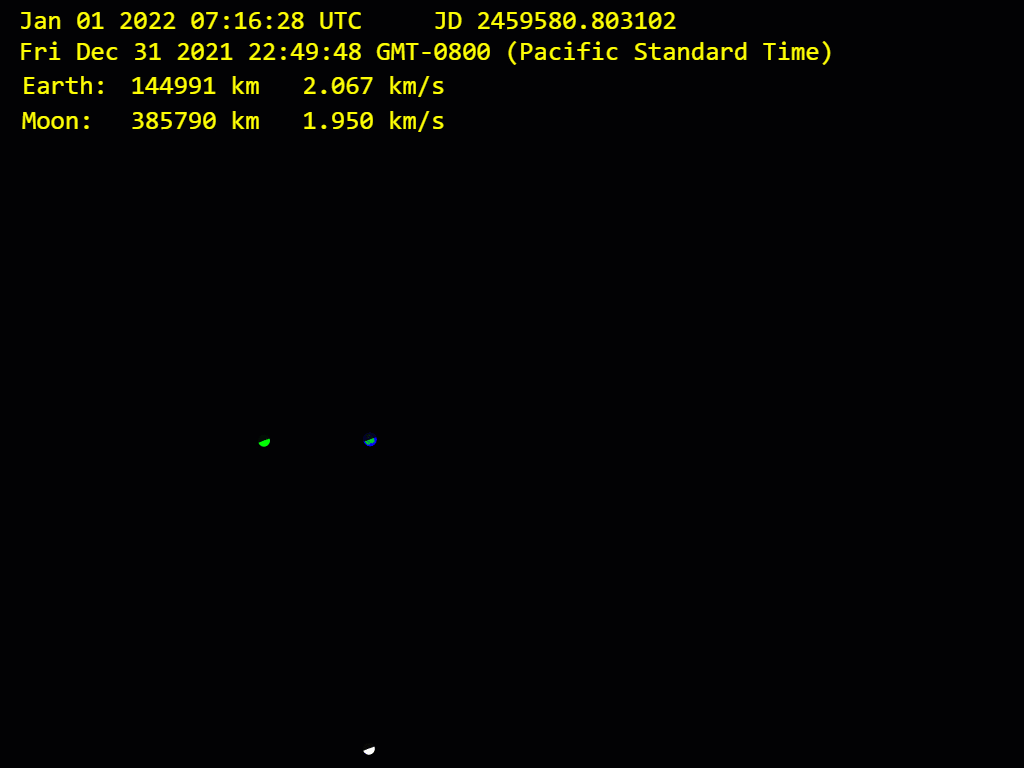OK, whose rocket just hit the moon?
You know you’re living in the space age when a rocket hits the moon, and the industry as a whole points to the sky and, like an angry teacher holding up a paper airplane, asks “Who launched this?!” Truly, that is what occurred this week as an unidentified rocket stage (!) impacted the lunar surface, forming a new and interesting crater and leaving us all wondering how it’s possible not to know what happened.
The short version of this story is that skywatchers led by Bill Gray had been tracking an object for months that, based on their calculations, would soon impact the moon. It was obviously a piece of rocket trash (rockets produce a ton of trash), but no one stepped up to say “yes, that’s ours, sorry about that.”
Based on their observations and discussions, these amateur (though by no means lacking in expertise) object trackers determined that it was most likely a SpaceX launch from 2015. But SpaceX didn’t cop to it, and after a while Gray and others, including NASA, decided it was more likely to be a 2014 launch out of China. China denied this is the case, saying the launch vehicle in question burned up on reentry.
Maybe they’re telling the truth; maybe they don’t want to be responsible for the first completely inadvertent lunar impact in history. Other spacecraft have struck the moon, but it was on purpose or part of a botched landing (in other words, the impact was intentional, just a little harder than expected) — not just a wayward piece of space junk.
Perhaps we’ll never know, and really, that’s the weirdest part of all. With hundreds of terrestrial telescopes and radars, space-based sensor networks and cameras pointing every which way — and that’s just the space monitoring we know about! — it seems amazing that a whole rocket stage managed to sit in orbit for six or seven years, eventually getting all the way to the moon, without being identified.

Animation by Tony Dunn showing the mystery object (green) orbiting and eventually impacting on the originally estimated March date. Image Credits: Tony Dunn
I thought someone at LeoLabs, which has been building a new network of debris-tracking radar all over the world, might have a little insight. Darren McKnight, senior technical fellow there, had the following answers to my questions.
How is it possible we didn’t know the identity and trajectory of such a large and relatively recently launched object?
Tracking derelict objects in cislunar orbit likely isn’t a high priority for government sensors when they can spend that time observing satellites or space junk that’s closer to Earth. However, tracking and monitoring of operational satellites in cislunar orbit, indeed, is critical to strategic intelligence, as it is new high ground.
Would confusion like this be possible for an object launched now?
Yes, this could happen again now as the technology used by the U.S. government to track space objects has not changed in many years.
Are there likely to be more of these “mystery objects” making impacts here and there over the next few years?
It’s possible an accidental moon-strike like this could happen again in the future, depending on the number of missions that put rocket bodies into those orbits and given enough time (years or decades). But events like this should generally stay exceedingly rare.
And as Bill Gray notes in his write-up:
… High-altitude junk has been of no concern to anybody outside the asteroid surveys, and even we haven’t been all that fussed about it. Objects of this sort are not tracked by the US Space Force; they (mostly) use radar, which is ‘near-sighted’: it can track objects four inches/10 cm across in low orbits, but can’t see big rocket stages like this when they’re as far away as the moon. You need telescopes for that.
Strange as it seems (to me, anyway), orbits are computed for objects of this sort only by me, in my spare time.
It’s remarkable in a way, but as anyone in the space monitoring world will tell you, there’s a lot to look at up there and you have to pick your targets. A rocket-sized object halfway to the moon is not simple or easy to get a good image of.
Our best clue as to the object’s identity may actually be the crater it left when it hit. The impact location was imaged shortly afterward and it has a curious double-O shape to it: two overlapping craters, one 18 meters across and the other 16 meters. Here’s the before and after:
“The double crater was unexpected and may indicate that the rocket body had large masses at each end. Typically a spent rocket has mass concentrated at the motor end; the rest of the rocket stage mainly consists of an empty fuel tank,” NASA’s Mark Robinson wrote.
Although it’s an enticing mystery, the truth is there doesn’t seem to be much reason to dedicate any serious resources to figuring it out. Stranger things happen in space than a chunk of a rocket flying off at exactly the angle and speed necessary to eventually strike the moon. And for all we know someone out there is well aware of what this weird, double-ended piece of space junk is but would rather keep it quiet.
from TechCrunch https://ift.tt/Kynv65S
Comments
Post a Comment